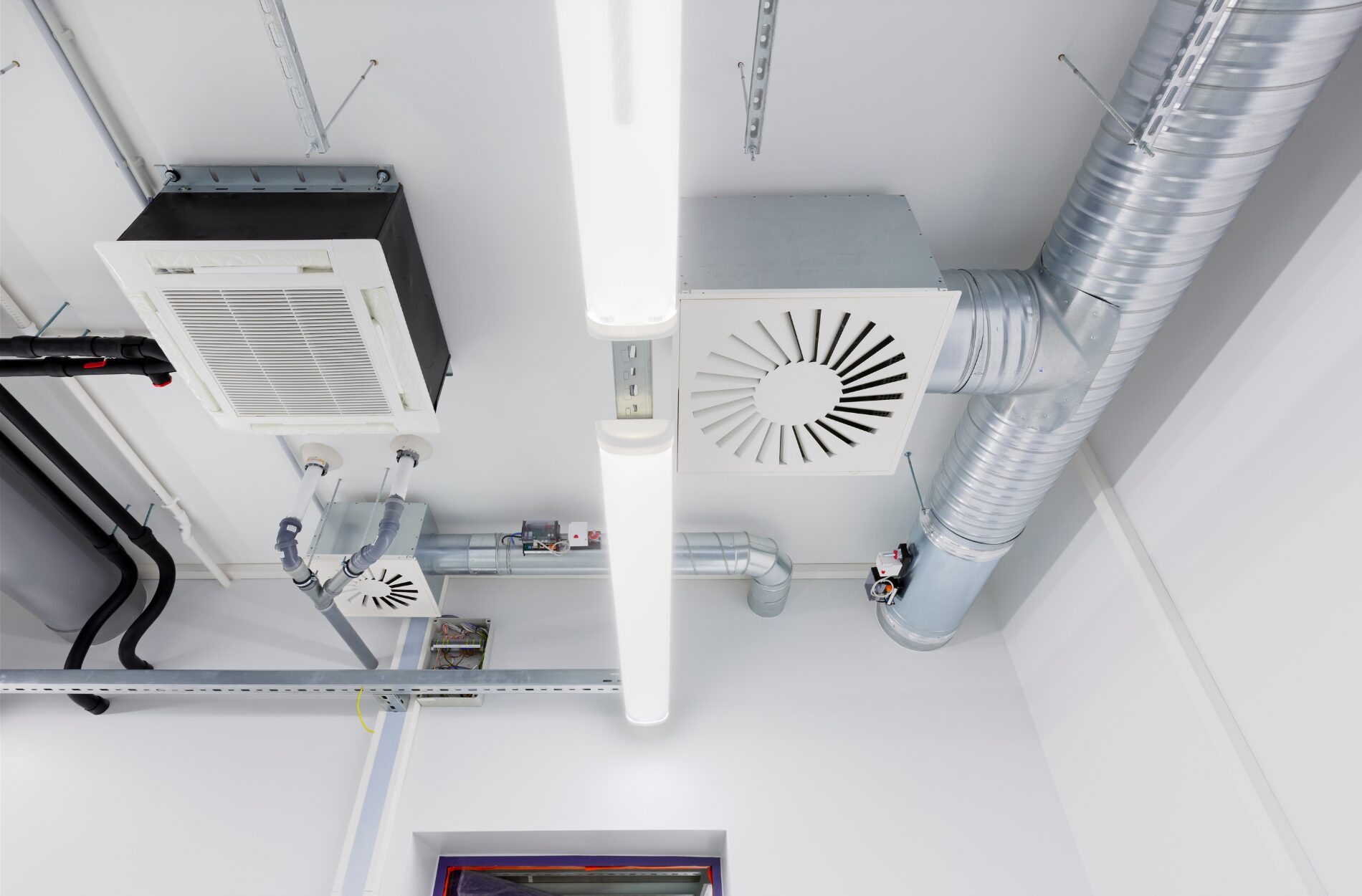In today’s architectural climate, the integration of sustainable and efficient systems into new construction designs is not just important—it’s essential. Energy Recovery Ventilation (ERV) systems represent one such technology that is pivotal in achieving this standard. These systems are engineered to enhance both the quality of indoor air and the overall energy efficiency of buildings, making them an ideal choice for new constructions aiming for environmental sustainability and superior comfort.
At the heart of ERV systems lies the capability to recover energy from exhausted indoor air and use it to treat incoming outdoor ventilation air. This process significantly reduces the energy demands on heating and cooling systems, thus aligning with our commitment to providing energy-efficient solutions in new construction projects. By integrating ERV systems, we are able to create buildings that are not only more comfortable and healthier to occupy but also more cost-effective to operate.
Understanding Energy Recovery Ventilation Systems
ERV systems play a crucial role in modern building design by optimizing energy use while improving indoor air quality. Essentially, these systems facilitate a continuous exchange of air, simultaneously expelling stale indoor air and drawing in fresh outdoor air. However, unlike standard ventilation systems, ERVs have the unique capability to transfer heat and moisture between the incoming and outgoing airstreams. During the colder months, the system recovers warmth from the exhaust air and uses it to heat the incoming cold air, which minimally impacts the heating requirements. Conversely, in warmer weather, the system extracts heat from the incoming air and transfers it to the outgoing air, thereby cooling the indoor atmosphere with much less strain on air conditioning units.
This heat exchange process is facilitated by a core component within the ERV system — the heat exchanger. Operated with minimal energy input, this component is key to the system’s efficiency. By stabilizing indoor temperatures and maintaining controlled humidity levels, ERVs contribute significantly to creating a comfortable and sustainable living or working environment.
Key Benefits Of Integrating ERV Systems In New Construction
Incorporating ERV systems in new construction projects presents numerous advantages that enhance building performance and occupant satisfaction. Firstly, the energy efficiency of ERV systems leads to a direct reduction in heating and cooling costs. By pre-conditioning the incoming air, these systems reduce the workload and energy expenditure of traditional HVAC units. Secondly, ERVs contribute significantly to indoor air quality, which is a paramount concern in modern construction standards. By ensuring a constant supply of fresh air and reducing indoor pollutants, ERVs create healthier environments that can enhance cognitive function and reduce the likelihood of respiratory issues.
Moreover, ERVs are instrumental in managing indoor humidity levels which, when uncontrolled, can lead to mold growth and structural damage. By mitigating these risks, the longevity of the building’s interior is significantly improved. Additionally, the integration of these systems supports compliance with various green building codes and certifications, such as LEED, making them highly attractive for projects aiming at sustainability credentials.
Overall, the adoption of ERV technology in new construction not only enhances building functionality but also aligns with evolving environmental standards, adding long-term value to properties and contributing to the welfare of their occupants.
How To Choose The Right ERV System For Your Building
Selecting the right Energy Recovery Ventilation (ERV) system for your building involves considering various factors that impact both performance and cost-effectiveness. First and foremost, the size of the building plays a crucial role. It’s important for us to calculate the volume of air that needs to be circulated to ensure the chosen ERV system can handle the required airflow efficiently. Additionally, the specific climate conditions of the area must be considered, as different environments will affect the efficiency of energy recovery.
The type of building and its usage also dictate the selection of the appropriate ERV system. For instance, a building with high internal heat loads, such as a commercial kitchen or a manufacturing facility, would benefit substantially from a system that excels in managing humidity. Meanwhile, a residential complex might prioritize a system offering better control over pollution and allergens. Lastly, it’s crucial to consider the existing HVAC infrastructure to ensure compatibility and to optimize the integration process. Our team is skilled at assessing these variables to recommend the most suitable ERV system for any new construction project.
Best Practices For Installing ERV Systems In New Construction Projects
Proper installation of ERV systems is vital for maximizing their potential benefits in new constructions. Our professionals ensure that these systems are integrated at the ideal stage of building construction, generally before the premises are sealed and finalized. This approach allows us to design the ductwork optimally for air distribution throughout the building, ensuring that no area is left underserved.
Moreover, strategic placement of both the air intake and exhaust outlets is crucial to prevent cross-contamination of the incoming and outgoing air streams. Proper insulation of all ducting is equally important to avoid energy losses and to maintain the efficiency of the heat exchange process. Relying on our expert team for the installation ensures that these technical elements are handled precisely, which significantly contributes to the overall energy efficiency and air quality of the building.
Conclusion
Implementing an ERV system in new construction isn’t just about adhering to modern building standards; it’s a step toward ensuring a sustainable, efficient, and healthy environment for occupants. The technology not only optimizes indoor air quality by regulating ventilation with minimal energy loss but also aligns with eco-friendly building practices that can lead to significant cost savings over time.
Our team at Delta T Heating and Cooling understands the intricacies of designing, choosing, and installing the perfect ERV system tailored to your specific needs. We are equipped to guide you through the entire process, ensuring that your new construction benefits from the highest standard of air quality management and energy efficiency. Contact our HVAC contractor in Kansas City today to see how we can elevate your project with our customized ERV solutions.



